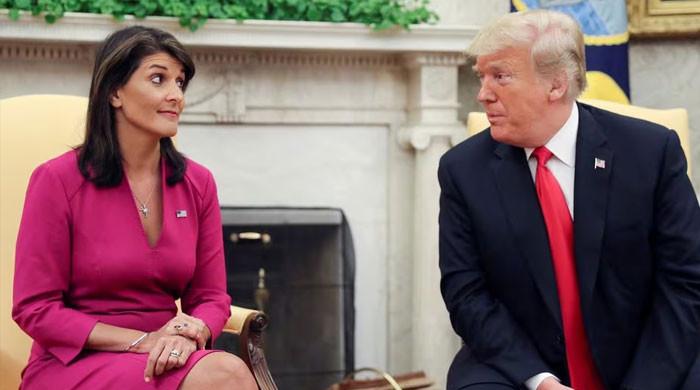Congratulations to the governor of Michigan Gretchen Whitmer. She managed to generate the most iconic photo of a Democrat since Michael Dukakis wore a helmet on a tank.
Whitmer, considered for a long time a promising presidential perspective by Democratic experts, was in the White House to discuss state businesses. But when Donald Trump's assistants took her to the Oval office, it was not for the one planned one with the president, but for a photo during which Trump signed (scandalous) executive orders aimed at two political enemies perceived for criminal investigation. Upon realizing that he was in a political tiger well, Whitmer opted for the ostrich maneuver. Lacking sand to put his head, he hid his face behind some folders.
The photo perfectly encapsulates democratic dysfunction. His visit to the White House was totally defensible, but because he was in the room when Trump was doing something indefensible, he is being vilified by his own side to enable Trump, generating more drama of “Democrats in disorder” in the process.
Of course, the Democrats really are In disorder.
If you only get the returns of the presidential elections of the 2024 upper line, it is not obvious that they should be. Kamala Harris lost in 1.48% of the popular vote, the fifth Closer choice since 1900.
And yet, Democrats are a disaster. In March, the party reached its All-low time in popularity. Last week, a bad week for Trump – Quinnipiac launched A survey Find that voters are uniformly divided, from 33% to 33%, on the question of which part cares most about them and their problems. The Democrats had led On that question for two digits, returning to 1994.
“This for me is the most shocking survey data that I have seen this year, maybe in any previous year,” exclaimed the CNN Harry Voting Guru.
The main driver of the difficult situation of the Democrats is that the party who likes to see himself as the child's party is perceived, not inaccurately, as the urban and coastal elite party for the largest part of the electorate: white voters without a university degree. In more general terms, voters continue to distrust elite institutions, and progressives have dominated most of those institutions for decades.
What Democrats can do to fix themselves and the perception of voters is the object of an intense internal debate. At least four options have emerged.
The first is to reproduce the “resist!” Theaters of the Trump's first term. The second is the “fight against the oligarchy!” Tour headed by Senator Bernie Sanders and representative Alexendra Ocasio-Cortez, which caused a dip in California during the weekend. Both approaches are psychologically attractive to Democrats because they do not require philosophical introspection or political self -correction.
Not so option 3. “Abundance” is the word of fashion and Book title For a technocratic theory of “liberalism on the side of the offer” that seeks to eliminate the bureaucracy and nimbyism of the interest group that is brought on the path of government planners who wish to accelerate the provision of public services: housing, high speed rail, etc.
This course has more to recommend it. But it has three political weaknesses. First, bureaucratic bottlenecks that Democrats of abundance want to avoid are closely guarded by progressive constituencies. If you want to dig the clean water or acts of endangered species, you will not choose fights with many Republicans. You will antagonize the wealthy Democrats and a medium dominated by liberal that reflectively launches such efforts in a negative way. Second, national Democrats are helpless in the Chamber and the Senate controlled by Republicans. So absent from a truly brave governor, they cannot demonstrate the effectiveness of their ideas. Finally, it essentially represents a lot of elite Eggheads that says “trust us, now we are different” when nobody trusts them.
Ironically, the fourth option is symbolically close to what Whitmer did: Hide. Or, like James Carville puts it“Play dead.“Keep your head down and dry dust while Trump is self -inmineted.
I think this is, with much, the wisest short term. Trump's approval, especially in the economyis chopped. The majority – 54% – of Americans think that Trump's policies are responsible for the state of the economy. If the trends continue, Trump will lose the support of the groups that believed that he could fulfill their economic promises.
The problem is the long term. Our policy is broken because both parties have given up the idea of being major parties. When they are out of power, they trust to produce their bases and the unpopularity of their owner opponents to place narrow victories, only to waste power in the service of fans to their bases once chosen. This cycle can only be broken on the one hand that, when chosen, chooses to build a majority from the center. I see no sign that that happens soon.
@Jonahdispch
Perspectives
Times Insights It offers an analysis generated by the voices content to offer all points of view. Insights does not appear in any news article.
point of view
Perspective
The following content generated by AI works perplexed. Los Angeles Times editorial staff does not create or edit the content.
Ideas expressed in the piece
- Jonah Goldberg argues that the photo of the Viral Oval Office of Governor Grertchen Whitmer symbolizes democratic dysfunction, attracting parallels to the photo of the 1988 tank of Michael Dukakis as a moment of false in false politician politic[5].
- He maintains that Whitmer's defense visit to discuss Michigan's specific issues (for example, disaster aid, the Base of the Selfridge National Guard) was eclipsed by his presence during Trump's “indefensible” actions, feeding intrapartid criticism and perceptions of the perceptions of[5].
- Goldberg identifies four democratic strategies to address their challenges: resistance tactics, progressive populism (“fight against the oligarchy”), the “liberalism of the” technocratic offer and the “played dead” approach, which he sees how the wisest short -term strategy given the number of Trump decreasing surveys.[5].
- He states that the viability of long -term matches requires building a majority “from the output center”, but sees little evidence of this change, criticizing both parties by prioritizing the base mobilization on a wide attraction[5].
Different views on the subject
- Whitmer's pragmatic defense: Whitmer defended his visit to the Oval office as necessary to ensure federal aid for disasters for Michigan and advocate problems such as invasive management of the tent and commercial relations with Canada, stating: “If I can get any of those things, everything is worth it.”[1][4]. He dismissed the controversy of the photo as a cheerful moment, emphasizing his focus on state priorities on political optics[1][2][3].
- Internal criticism: Some Democrats accused Whitmer of enabling Trump when he appeared with him during executive orders aimed at their critics, and agents warn that they could damage their 2028 perspectives of 2028[3][5]. Critics argued Trump's visual praising his contrast to the position of his party[2][3].
- Commercial Policies Divisions: While Whitmer supported strategic rates to protect Michigan's automotive industry, calling them a “blunt instrument” that requires clear objectives[5]Colorado Jared Polis governor rebuked tariffs as harmful to consumers and manufacturers, which reflects broader democratic tensions about commercial strategy[5].
- Focus on economic realities: Governors such as JB Pritzker (IL) and Gavin Newsom (CA) prioritized the impacts of the rate mitigating state economies, avoiding ideological debates in favor of highlighting the growing costs linked to Trump's policies[5]. The strategists urged to frame the Trump approach as “erratic” to deviate from philosophical divisions[5].
- Diplomatic approaches vs. confrontation: Whitmer's emphasis on the commitment (“if you are not on the table, you are in the menu”) diverged of his companions who openly opposed Trump, illustrating a crack between pragmatism and resistance within the party[2][3][5].












